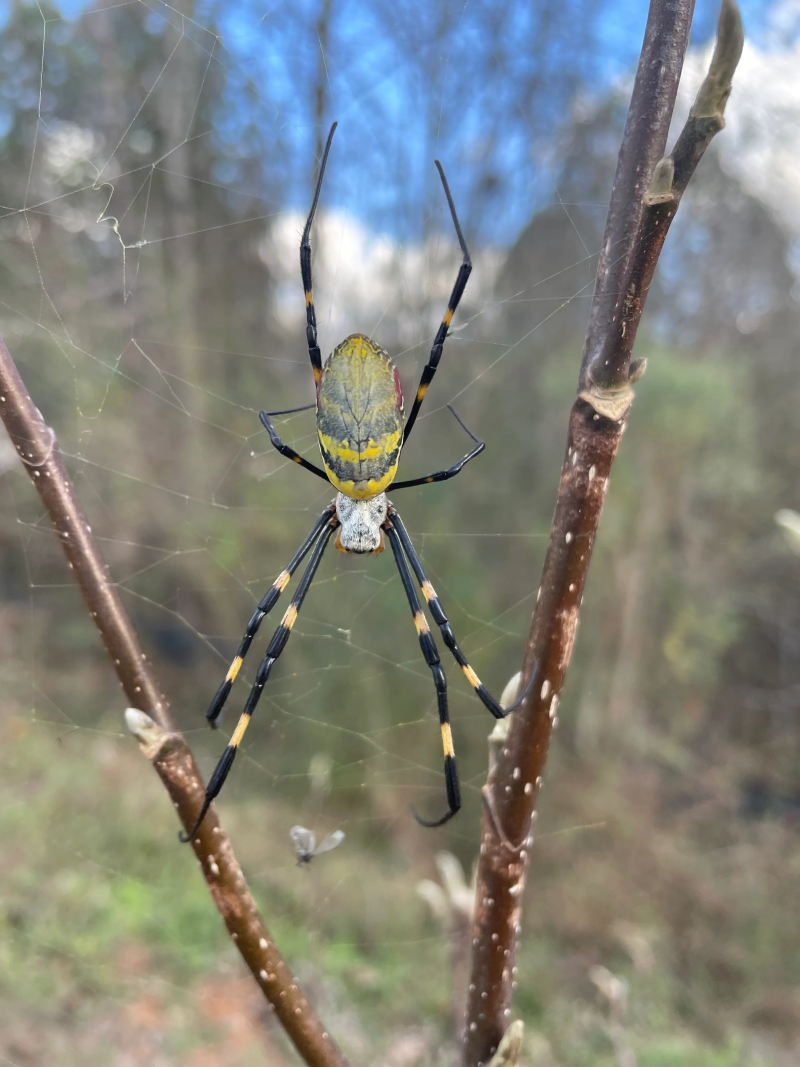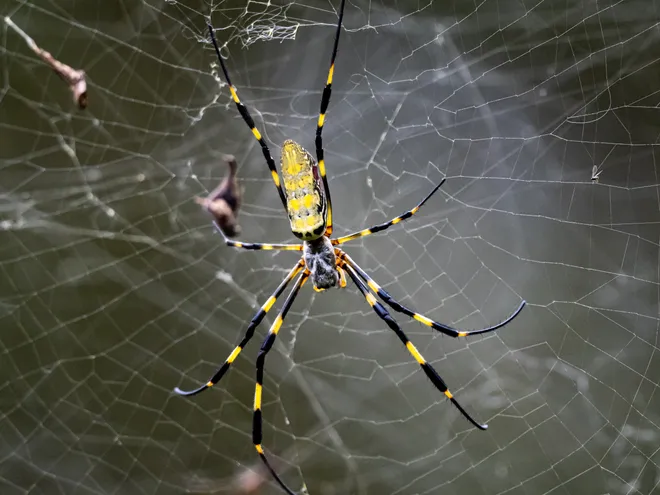Giant, flying Joro spiders make creepy arrival in Pennsylvania just in time for Halloween
Joro spiders have ballooned their way to Pennsylvania just in time for the spooky Halloween season.
Six of the giant, brightly colored arachnids, first spotted in Georgia almost a decade ago, were reported to have been sighted in Bucks County, Philadelphia on Sept. 5, according to Joro Watch, an interactive monitoring program developed by the University of Georgia's Center for Invasive Species and Ecosystem Health.
Bucks County, Pennsylvania is 43 miles from Philadelphia.
After the sighting was reported, a local entomologist confirmed it by a site visit, Bucks County Courier Times, part of the USA TODAY NETWORK, reported. The observation has since been reviewed and verified by a researcher and EDDMapS Data Coordinator from the University of Georgia.
New spider species:A new tarantula species is discovered in Arizona: What to know about the creepy crawler
What are Joro spiders?

An invasive species native to East Asian countries including Japan, Korea, Taiwan and China, the Joro spider is believed to have first made its way to the U.S. in the early 2010s. These species are also known as Trichonephila clavata.
Measuring around 3-4 inches, female Joro spiders are larger than the males, and are primarily yellow with dark blue strips and a reddish abdomen. Males are smaller and thinner – just over a quarter of an inch – and are brown, with a dark gray/black and yellow stripes.
They prefer the warmth of the sun and are not indoor house spiders. The species belongs to a group of large spiders known as golden orb-web weavers, according to the University of Georgia, which make "enormous, multi-layered webs of gold-colored silk."
They can travel by "ballooning," or using their web silks to carry them on the wind to a new destination. Because of this they are also known as the "flying" spider. Joro spiders can create large webs that can be up to 10 feet wide.

Where have Joro spiders been seen in the US?
As of 2022, the Joro spider's range in the U.S. is around 120,000 kilometers, spread across Georgia, South Carolina, North, Carolina and Tennessee, with reports of the spider in Alabama, Maryland, Oklahoma and West Virginia, according to a study published by researchers at Clemson University on Joro spiders.
The study further determined that the species is spreading rapidly beyond the South Carolina area, and data shows they could inhabit most of the eastern U.S.
David Coyle, a scientist and professor at Clemson, had one major takeaway from the results of the study: "These things are here to stay."
Coyle added that the study showed that "their comfort area in their native range matches up very well with much of North America and the data showed that this "spider is going to be able to inhabit most of the eastern U.S."

Are Joro spiders dangerous?
While the Joro spiders' size may be intimidating, they are rather timid and do not pose a danger to humans, dogs or cats. They are venomous but don't bite humans or pets unless they are cornered, and their fangs don't penetrate human skin.
University of Georgia entomologist Nancy Hinkle previously told USA TODAY Joro spiders also serve as "pest control," feeding on insects like mosquitoes, flies and stink bugs. Birds also feed on the spiders, but the official impact on the Southeast and its species has yet to be determined.
Contributing: Jo Ciavaglia, Amanda Wallace, Bucks County Courier Times
Saman Shafiq is a trending news reporter for USA TODAY. Reach her at sshafiq@gannett.com and follow her on X and Instagram @saman_shafiq7.
Disclaimer: The copyright of this article belongs to the original author. Reposting this article is solely for the purpose of information dissemination and does not constitute any investment advice. If there is any infringement, please contact us immediately. We will make corrections or deletions as necessary. Thank you.



